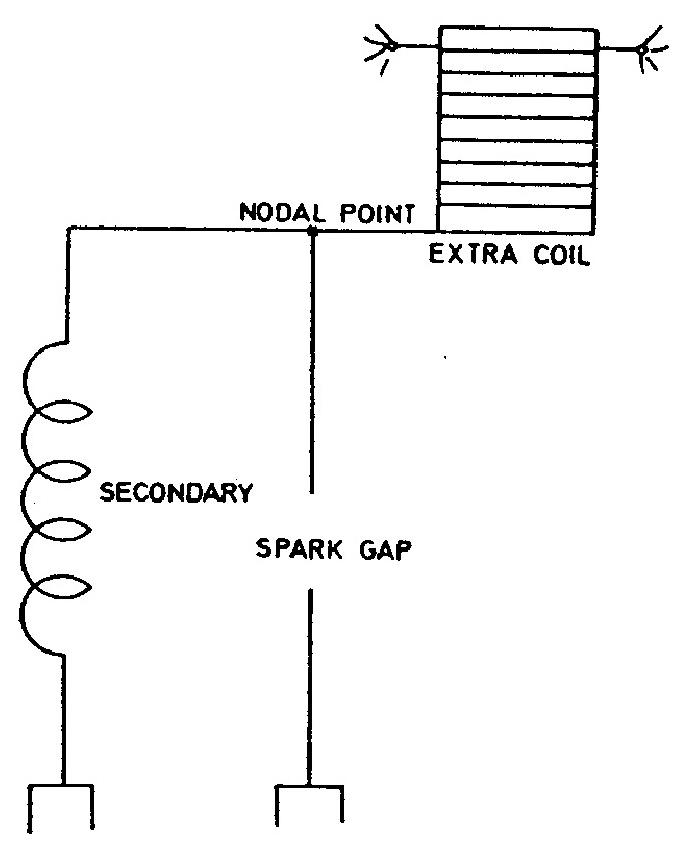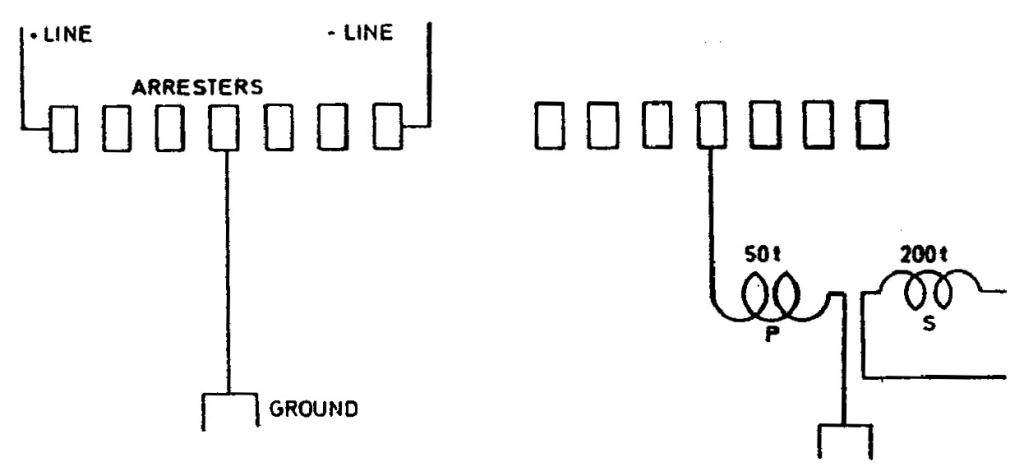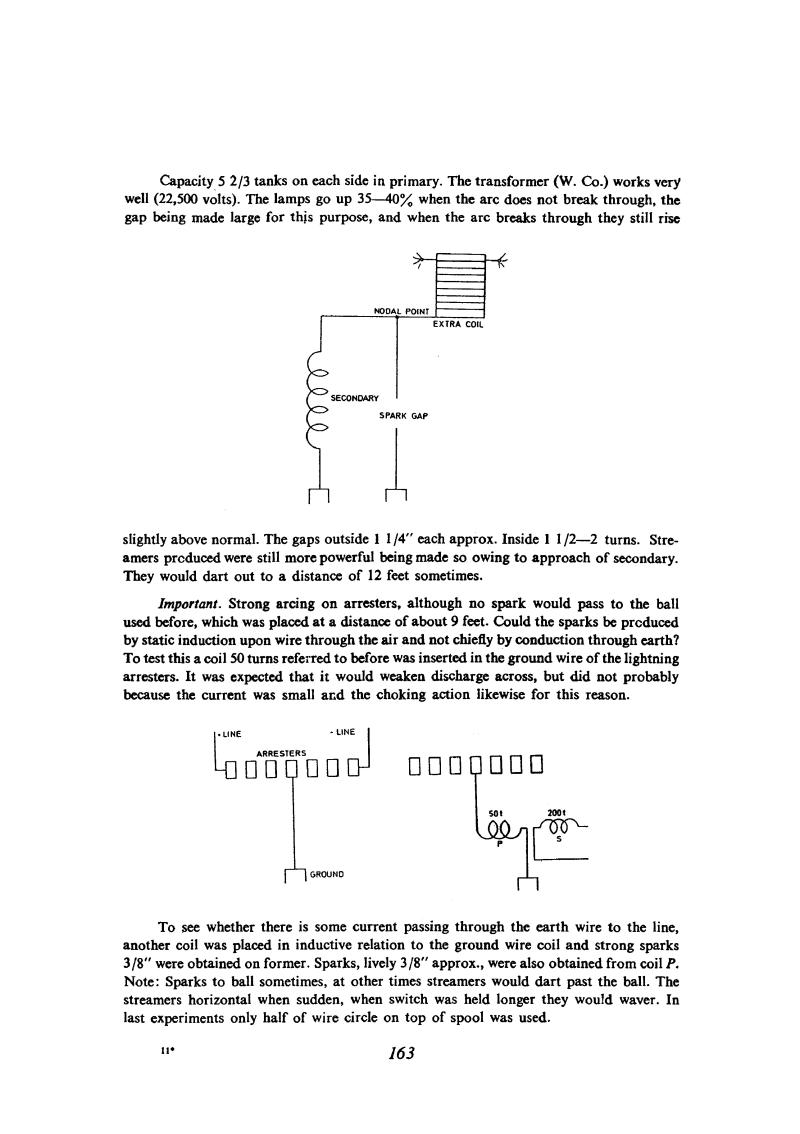
Nikola Tesla Books
Capacity 5 2/3 tanks on each side in primary. The transformer (W. Co.) works very well (22,500 volts). The lamps go up 35 - 40% when the arc does not break through, the gap being made large for this purpose, and when the arc breaks through they still rise
slightly above normal. The gaps outside 1 1/4" each approx. Inside 1 1/2 - 2 turns. Streamers produced were still more powerful being made so owing to approach of secondary. They would dart out to a distance of 12 feet sometimes.
Important. Strong arcing on arresters, although no spark would pass to the ball used before, which was placed at a distance of about 9 feet. Could the sparks be produced by static induction upon wire through the air and not chiefly by conduction through earth? To test this a coil 50 turns referred to before was inserted in the ground wire of the lightning arresters. It was expected that it would weaken discharge across, but did not probably because the current was small and the choking action likewise for this reason.
To see whether there is some current passing through the earth wire to the line, another coil was placed in inductive relation to the ground wire coil and strong sparks 3/8" were obtained on former. Sparks, lively 3/8" approx., were also obtained from coil P. Note: Sparks to ball sometimes, at other times streamers would dart past the ball. The streamers horizontal when sudden, when switch was held longer they would waver. In last experiments only half of wire circle on top of spool was used.
11*
163
Tesla: âAparatus for utilizing effects transmitted through natural mediaâ, U.S. Patent 685 956, Nov. 5, 1901, Appl. Nov. 2, 1899, P-319.
August 26
Tesla experimented with twice the interruption rate. The oscillator worked better and there was heavy sparking across the lightning arresters (Fig. 4). Investigating the cause of this sparking he inserted a coil in the lead of the metal sphere (Fig. 1) to reject high frequencies. In an earlier experiment (see July 30th) inserting such a choke coil in the ground line had stopped sparking across the arresters. This time it did not, so Tesla tried the circuit in Fig. 2. Still there was no marked change, the sparking across the arresters was only slightly reduced. After this experiment he began to wonder whether the grounding point of the secondary was not perhaps a peak rather than a node of the standing wave. It must be understood that Tesla thought that standing waves were set up around the transmitter (like waves on an open transmission line. With shorter waves the rate of change of amplitude with distance would be faster (i.e. maxima and minima would occur at shorter distance intervals), so he thought that a large potential difference could be obtained with a short distance between the grounding of the secondary and that of the lightning arrester.
In order to explain what happened when the sphere was not grounded (which would mean that there were no short waves) but the sparking across the arrester did not stop, Tesla found it necessary to formulate a new hypothesis: â Could the sparks be produced by static induction upon wire through the air and not chiefly by conduction through earth?â The experiment with which he tried to verify this hypothesis did not yield any definite answer.



